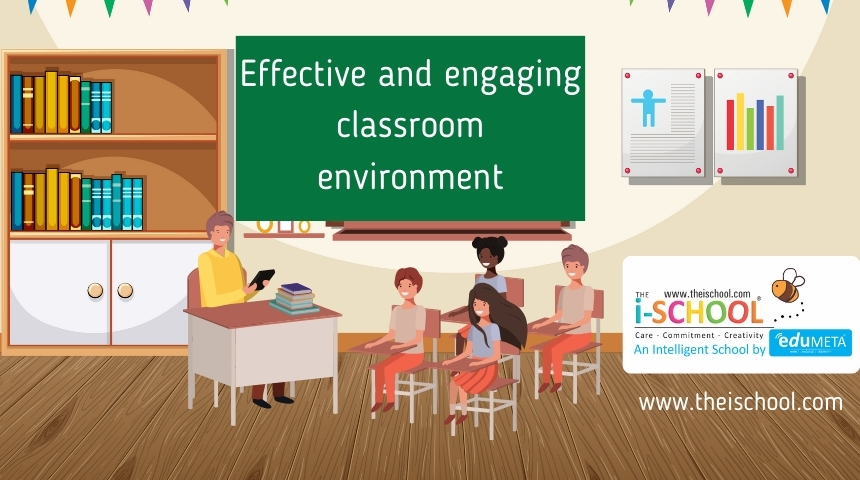Effective and engaging classroom environment

Creating an effective and engaging preschool classroom environment is crucial for the development and education of young children. A well-equipped classroom not only supports academic learning but also fosters social, emotional, and physical growth. Here, we will explore the essential elements that every preschool classroom should have to ensure a well-rounded and stimulating educational experience for preschoolers.
1. Safe and Welcoming Environment
A preschool classroom should be a safe and welcoming space where children feel comfortable and secure. The classroom should be child-proofed with safety measures in place, such as covered electrical outlets, secure furniture, and non-toxic materials. Additionally, the environment should be inviting, with bright colors, child-friendly decor, and clearly defined areas for different activities.
2. Age-Appropriate Furniture
The furniture in a preschool classroom should be appropriate for young children. This includes child-sized tables and chairs, low shelves for easy access to materials, and comfortable seating options for group activities and reading time. Properly sized furniture ensures that children can work and play comfortably, promoting independence and engagement.
3. Diverse Learning Centers
A well-equipped preschool classroom features various learning centers that cater to different areas of development and interest. Key learning centers might include:
- Reading Center: A cozy area with a variety of age-appropriate books, comfortable seating, and quiet space for individual or group reading.
- Art Center: Stocked with art supplies such as crayons, markers, paper, paint, and craft materials, this center encourages creativity and self-expression.
- Math and Science Center: Equipped with manipulatives like counting beads, measuring tools, and simple science experiments, this area supports cognitive development.
- Dramatic Play Area: Featuring costumes, props, and themed play sets (such as a kitchen or doctor’s office), this center fosters imaginative play and social skills.
- Sensory Table: A table filled with materials like sand, water, rice, or beans that provide tactile exploration and sensory experiences.
4. Educational Materials and Resources
Preschool classrooms should have a variety of educational materials and resources that support learning across different domains. These materials should include puzzles, building blocks, educational games, and interactive toys that promote problem-solving, fine motor skills, and cognitive development. Rotating these materials regularly keeps children engaged and stimulates their curiosity.
5. Technology Integration
While traditional hands-on activities are crucial, integrating technology in a balanced way can enhance learning. Age-appropriate educational software, interactive whiteboards, and tablets with educational apps can complement traditional teaching methods and provide additional learning opportunities.
6. Outdoor Play Area
Physical activity is essential for young children’s development. A preschool should have a safe and well-equipped outdoor play area that allows for running, climbing, and exploring. Outdoor play supports physical health, gross motor skills, and provides a valuable opportunity for children to engage with nature.
7. Visual Aids and Displays
Classroom walls should feature visual aids and displays that enhance learning and create an engaging environment. Posters, charts, and children’s artwork can be used to decorate the classroom while reinforcing educational concepts and celebrating students’ creativity.
8. Classroom Management Tools
Effective classroom management is essential for a smooth and productive learning environment. Tools such as visual schedules, behavior charts, and clear classroom rules help children understand expectations and routines. These tools promote a sense of order and discipline while encouraging positive behavior.
9. Inclusive and Diverse Materials
A preschool classroom should reflect the diversity of the world and promote inclusivity. This includes having books, toys, and materials that represent different cultures, languages, and abilities. Teaching materials should be inclusive and foster an appreciation for diversity, helping children develop empathy and respect for others.
10. Teacher Resources and Professional Development
To provide high-quality education, teachers need access to professional development resources and support. This includes training materials, curriculum guides, and opportunities for ongoing professional growth. Well-supported teachers are better equipped to create an enriching learning environment for their students.
Conclusion
Creating a well-equipped preschool classroom involves more than just filling the space with toys and materials. It requires thoughtful consideration of the needs and interests of young children, as well as a commitment to providing a safe, engaging, and inclusive learning environment. By incorporating these essential elements, preschool educators can create a dynamic classroom that supports the holistic development of every child.
